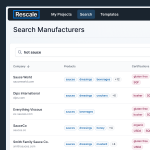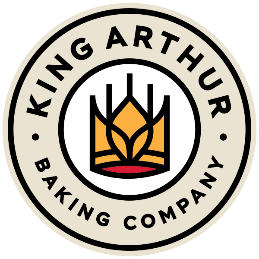Report: Shared-Use Kitchens Want Clear Definitions, Licensing

Starting a food business can take a bite out of any entrepreneur’s wallet. Shared-use kitchens, however can help. The communal spaces for rent alleviate financial pressure on emerging businesses by helping them avoid high startup costs associated with building infrastructure. A recent report noted that costs associated with outfitting a licensed commercial kitchen can range from $50,000 to $500,000, without building costs. Still, shared use kitchens aren’t without their own costs, too. That same report found that the lack of standardized policies, practices and definitions for shared-use kitchens are also causing costly growing pains.
This month, The Food Corridor, an online database for food and beverage businesses to connect with commercial assets, and the Network for Incubator and Commissary Kitchens, a group of more than 700 kitchen owners, operators, directors and managers, surveyed 38 kitchens, representing over 1,000 businesses.
About 66 percent of those surveyed said their counties or states do not have a standardized definition for shared-use kitchens. In some communities, the shared spaces are defined as a school kitchen; other cities may license them as food service establishments or preparation facilities. Because these definitions don’t quite fit, it’s costing businesses, kitchens and health departments both time and money.
“Right now there’s just kind of a back and forth about the best way to do it,” Ashley Colpaart, co-founder and CEO of Colorado’s Food Corridor, told NOSH. “[Many] communities don’t have shared use kitchens defined in their food code, so they are trying to fit the shared-use model under different offices and that is causing regulatory hurdles, specifically for the food businesses that have to jump through certain hoops.”
Colpart pointed to Chicago as one of the few cities that is ahead of the curve and offering a specific shared-kitchen license. It defines the space as the following:
“Any establishment used as a primary place of business for the exclusive or primary purpose of utilizing, leasing, or renting its commercial kitchen space to individuals or business entities for food preparation, temporary production capacity, menu planning, training, taste testing, product development, food packaging, food storage or any other food-related purpose; and does not hold a valid retail food establishment license.”
It seems that kitchens are ready and willing to work with their local governments to resolve these issues. The study found that over half of respondents described their relationship with their local health departments as “fairly open,” with another about 24 percent categorizing their relationship as “neutral” or “still under development.”
However, there are still frustrations. Over 20 percent described their relationship as “restrictive” due to a “lack of knowledge of the shared-use kitchen model disseminated among inspectors.”
According to Colpaart, frustrations can stem from a lack of standards regarding whether regulators work directly with the individual businesses operating out of the kitchens or whether they work with kitchen operators themselves.
The kitchens also face stress in trying to respond to the variety of formats and rooms — including clean spaces, allergen-free rooms and event spaces — their clients need to run their businesses. These rooms all require different licensing with their own sets of compliance and operational procedures.
Still, Colpaart said she believes shared-use kitchens are the best way for entrepreneurs to test and scale their business models affordably.
“I think one of the biggest things if you want to start a business, is knowing that it’s going to cost money. A lot of people go into these shared use kitchens thinking that it is a free resource, but they need to remember that they are saving the money by not outfitting their own infrastructure or leasing their own facility,” Colpaart said. “Their business model is to help leverage businesses, help them become more successful and then share in that growth together through providing ecosystem services. The food business’s success is the kitchen’s success.”
Colpaart told NOSH she hopes the report can be used by all parties as a way to find common ground and increase efficiency while pioneering this new business model. Her goal is to distribute the report and its suggestions “within the policy circle,” getting it into the hands of extension agents, public health organizations and policy makers as a guideline for how to better communicate and work with kitchens.
Colpaart added she’ll also be working with Purdue University next month to create a guideline of actionable best practices for shared-use kitchens.
“I think the role of the policy report is to allow these kitchens to use it as a tool to share with their health departments so the departments can use the report to explore the model a little bit better, use it to integrate into their health code, and help them to figure out the best way to regulate this new emerging model because it’s just that: a working model,” Colpaart said. “So the faster the health department can get on that and be part of the communication, the better.”
















